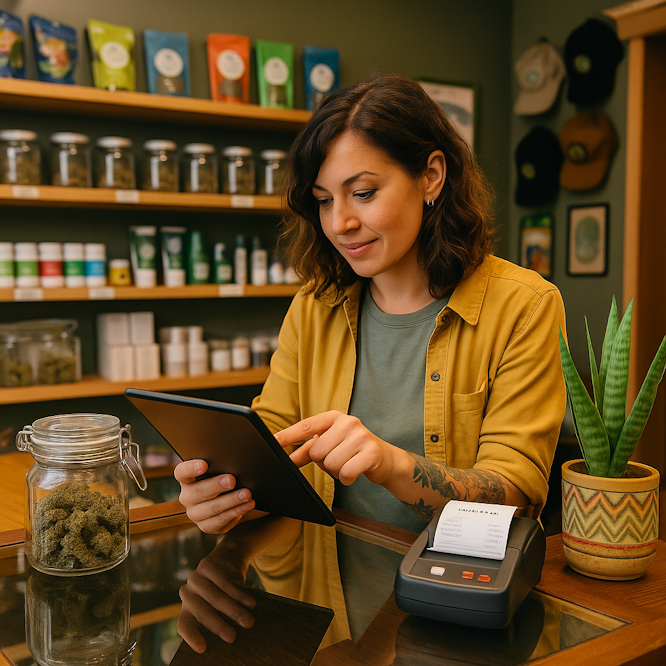The sun’s hitting the Okanagan, tourists are everywhere, and your dispensary is hopping. It’s not just the cannabis flying off your shelves, right? It’s the hoodies, the fancy new vaporizers, and all the accessories. Business is booming. But when you look at the day’s sales, a little question might be buzzing in your head: are your books actually keeping up? Are you positive you’re handling the money from everything besides the bud correctly?
For so many dispensary owners in Penticton, Kelowna, and across the Similkameen, this is a huge hurdle. You’re a pro when it comes to cannabis, not necessarily the confusing maze of provincial sales tax. So let’s clear the smoke and get this sorted out.
First Things First: What Exactly is ‘Ancillary Revenue’ at a BC Dispensary?
Simply put, it’s the cash you make from anything that isn’t a cannabis product. Think of it as all the gear and goodies that make the whole experience better, but don’t contain any cannabis themselves. And you probably sell more of it than you realize.
- The Obvious Stuff: This is the gear you’ve likely had since day one. We’re talking about merchandise like t-shirts and hats, glass bongs and pipes, and all the essentials like grinders, rolling papers, and vaporizers.
- The New Wave: Smart dispensaries are getting creative. This bucket includes branded lifestyle items (think stash bags or cool candles), workshops to educate your customers, ticketed events you host in your store, and even those delivery fees.
- The BC Rules: Don’t forget, the BC LCRB has some pretty strict rules. You can’t just turn your shop into a variety store. Ancillary products have to be directly related to cannabis or your brand. So, no, you can’t start selling lottery tickets and snacks. It’s always a good idea to double-check the latest LCRB regulations.
Why You Absolutely Cannot Just Lump It All Together
It sounds so much easier to just count the cash in the drawer at the end of the night and call it ‘sales.’ Trust me, that’s a recipe for a massive headache down the road. Separating your revenue isn’t just picky accounting—it’s one of the smartest things you can do for your business. It’s like sorting your recycling; you do it because every piece has a specific place it needs to go.
- Compliance is Everything: This is the big one. The Canada Revenue Agency (CRA) and the BC Liquor and Cannabis Regulation Branch (LCRB) care about very different things. The LCRB needs squeaky-clean data on your cannabis sales. The CRA needs you to track and pay the right GST and PST on all your different products. Messing this up is not an option.
- That Pesky Excise Tax: The federal excise tax is a unique beast that only applies to cannabis products. If you lump a t-shirt sale into your cannabis numbers, you completely throw off your excise tax calculations. That’s a fast track to compliance problems.
- Know What’s Actually Making You Money: Seriously. Do you know the real profit margin on that hoodie? Is it better than your margin on pre-rolls? When you separate your revenue streams and the costs for each category, you get a brutally honest look at what’s driving your profits. That kind of data is pure gold for making smart business decisions.
Your Bookkeeping Makeover: A Simple Setup
Ready to get practical? Don’t sweat it, this is easier than it sounds. The secret is getting a little more specific in your bookkeeping software. Your Chart of Accounts, which is basically the backbone of your finances, just needs a quick tweak. Instead of one vague ‘Sales’ account, let’s create a few more.
Here’s a simple setup to get you going:
Income Accounts:
Sales - Cannabis FlowerSales - Cannabis ExtractsSales - MerchandiseSales - AccessoriesRevenue - Events
Cost of Goods Sold (COGS) Accounts:
COGS - Cannabis FlowerCOGS - Cannabis ExtractsCOGS - MerchandiseCOGS - Accessories
Pro Tip: Your Point of Sale (POS) system is your new best friend. A good POS built for cannabis shops can be set up to automatically categorize every single item you sell. It pushes the data into the right accounts for you, making this whole process almost foolproof.
The BC Tax Tango: Getting GST and PST Right
Welcome to the wonderful world of BC sales tax. It’s a bit weird, but once you get the hang of it, it’s totally manageable. For all your non-cannabis stuff, you’re juggling two different taxes.
- GST (5%): The federal Goods and Services Tax. This applies to pretty much every ancillary product and service you can think of, from a bong to a workshop ticket.
- PST (7%): The Provincial Sales Tax. This one is pickier. You’ll find that a lot of common dispensary accessories are actually exempt from PST.
Let’s make it crystal clear with a chart:
| Item Example | GST (5%) Applied? | PST (7%) Applied? | Total Tax | | ——————— | —————– | —————– | ——— | | T-Shirt or Hoodie | Yes | Yes | 12% | | Bong or Pipe | Yes | Yes | 12% | | Vaporizer | Yes | Yes | 12% | | Rolling Papers | Yes | No | 5% | | Grinder | Yes | Yes | 12% | | Event Ticket | Yes | No | 5% |
Getting this right is non-negotiable. Charging the wrong tax, or not sending in the tax you collected, is the fastest way to get an unpleasant call from the government.
Turning Reports into Revenue: Grow Your Okanagan Business
Okay, this is the fun part. This is where all that careful organizing pays off big time. Your detailed financial reports are no longer just a chore you do for the government; they’re your strategic roadmap to growth.
By looking at your neatly separated sales data, you can start answering some powerful questions. Which accessories bring in the most profit? What kind of merch actually sells when the summer tourists are in town? This intel helps you make smarter choices about inventory, create promotions that actually work, and build bundles that boost your bottom line (while staying compliant, of course).
Properly accounting for your ancillary revenue changes everything. It turns your bookkeeping from a necessary evil into your secret weapon, helping your Okanagan dispensary do more than just survive. It helps you thrive.
Frequently Asked Questions
How do I account for a bundle that has both a cannabis product and a t-shirt in it?
You’ve got to break the bundle’s price down in your records. You assign a value to the cannabis item (which gets hit with excise tax and GST) and a value to the t-shirt (which gets GST and PST). This makes sure every part of the sale and its specific taxes are tracked perfectly.
Are delivery fees ancillary revenue, and how are they taxed for my Kelowna shop?
Yep! Delivery fees are service revenue. Here in BC, delivery services get the 5% GST, but they are exempt from PST. You should track this in its own income account, like ‘Revenue – Delivery Fees’.
What does the LCRB need to see for my sales of non-cannabis stuff like vaporizers?
The LCRB is almost entirely focused on cannabis tracking. While they don’t need the same nitty-gritty reports for your accessories, you have to be able to prove that your ancillary sales are totally separate from your cannabis sales. This is how you ensure your provincial cannabis reports are accurate.
If I host a paid workshop at my Penticton store, how do I record the ticket sales and taxes?
Ticket sales are absolutely ancillary revenue. You should log the income in an ‘Event Revenue’ account. In BC, these sales are subject to 5% GST, but you generally don’t have to charge PST on them.
My POS system is a pain and doesn’t separate sales easily. Any tips or software you recommend for BC retailers?
If you’re stuck with a basic POS, the manual way is to run detailed end-of-day reports and physically separate the sales totals by category before you log them in your accounting software. But that’s a huge pain and leaves a lot of room for error. Honestly, it’s worth every penny to invest in a cannabis-compliant POS like Cova, Greenline, or TechPOS. They’re built for the headaches of BC’s regulations.

